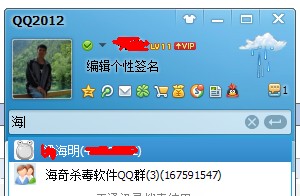对C#,ASP.NET MVC和FluentValidation来说真的很新.
public class UserDetails{
public int ID { get; set; }
public string UserName { get; set; }
public string Email { get; set; }
}
现在,我一直在使用FluentValidation验证UserName和Email,例如:
public AdminDetailsValidator(){
RuleFor(ad => ad.UserName).NotNull().Must(UniqueUserName(UserName)).WithMessage("UserName not Available");
RuleFor(ad => ad.Email).NotNull().Must(UniqueEmail(Email)).WithMessage("This Email id has already been registered"); ;
}
public bool UniqueUserName(string un)
{
if (UserDbContext.userDetails.SingleOrDefault(p => p.UserName == un) == null)
{
return true;
}
else
{
return false;
}
}
public bool UniqueEmail(string em)
{
if (UserDbContext.userDetails.SingleOrDefault(p => p.Email == em) == null)
{
return true;
}
else
{
return false;
}
}
但我宁愿想要一个更通用的UniqueValidator,我可以使用多个类和属性.或者至少,我不必为每个房产单独设置一个功能.所以我查看了自定义验证器.但我不知道,我如何使用该功能满足我的需求.
我想做这样的事情:
RuleFor(ad => ad.Email).NotNull().SetValidator(new UniquePropertyValidator<UserDbContext>(userDetails.Email).WithMessage("This Email id has already been registered");
甚至可以这样做吗?我想传递DbContext作为类型参数和属性作为参数(或它的一些变体,无论哪个工作).并且该方法可以针对表检查属性并返回它是否唯一.
解决方法
你有没有考虑过使用lambdas和泛型?我没有使用FluentValidation,因此这可能不是验证器的正确方法.
var dbContext = new UserDbContext();
RuleFor(ud => ud.Email)
.NotNull()
.SetValidator(
new UniquePropertyValidator<UserDetails>
(ud,ud => ud.Email,() => dbcontext.userDetails)
.WithMessage("This Email id has already been registered");
public class UniquePropertyValidator<T> {
public UniquePropertyValidator(T entity,Func<T,string> propertyAccessorFunc,Func<IEnumerable<T>> collectionAccessorFunc) {
_entity = entity;
_propertyAccessorFunc = propertyAccessorFunc;
_collectionAccessorFunc =collectionAccessorFunc;
}
public bool Validate(){
//Get all the entities by executing the lambda
var entities = _collectionAccessorFunc();
//Get the value of the entity that we are validating by executing the lambda
var propertyValue = _propertyAccessorFunc(_entity);
//Find the matching entity by executing the propertyAccessorFunc against the
//entities in the collection and comparing that with the result of the entity
//that is being validated. Warning SingleOrDefault will throw an exception if
//multiple items match the supplied predicate
//http://msdn.microsoft.com/en-us/library/vstudio/bb342451%28v=vs.100%29.aspx
var matchingEntity = entities.SingleOrDefault(e => _propertyAccessorFunc(e) == propertyValue);
return matchingEntity == null;
}
}

